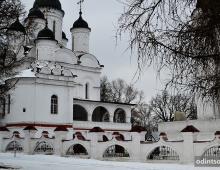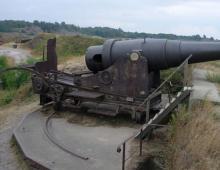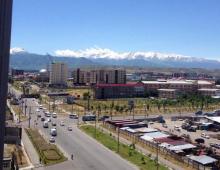Suomenlinna Finland. Excursion to Suomenlinna Fortress
Suomenlinna is one of the most interesting attractions in Helsinki, a great place to walk, dine and even spend the night. This open-air museum is listed as a UNESCO World Heritage Site.
Suomenlinna, that is, the “Finnish fortress” (or, in the second state language of Finland - Sveaborg) is a sea bastion built on several islands in order to protect the entrance to the harbor of the Finnish capital. The first fortress was built during the Swedish rule - in 1748-1772. However, she could not resist the Russian troops - she fell in 1808, and after her, all of Finland came under the rule of the Russian Empire. And much later, in 1855 - during the Crimean War - she was able to repulse the Anglo-French squadron. Then the walls were completed and rebuilt, so now we already see the “Russian version” of the “Finnish fortress”.
Why go to the island in Suomenlinna
Firstly, an excursion to the island is a pleasant walk along the sea, and, by the way, it will cost less than 1-2 hour excursions offered on the waterfront. From the water you can see (in an unusual perspective!) Most of the city's attractions.
Secondly, Suomenlinna is a great place for walks and picnics in fine weather. There are a dozen establishments on the territory of the fortress, among which there is even a restaurant-brewery.
Thirdly, to stay inexpensively, Hostel Suomenlinna has been opened on one of the islands.
And, finally, those who are interested in history will be interested in walking along the outstanding fortification, inspecting the preserved forts and bastions, visiting the military and customs museums, as well as on a submarine.
And on the main island of Suomenlinna, there is an “open type” men's prison that prepares prisoners for life in freedom. Prisoners work on the island or travel to the “mainland”, receive a salary and use it to pay for their maintenance.
How to get to Suomenlinna
Very simple! Ferries run from the Market Square (Kauppatori) to the fortress from 6 am to 2 am - from 2 to 4 times an hour, depending on the day of the week and season. Travel time is approximately 20 minutes. Regular public transport tickets are valid on these ferries. That is, if you bought a subscription for the day, you can go to the island using it.
Forgot to do it ahead of time? No problem! There is free wi-fi in the information center of the fortress (located in the first building you see from the pier).
Suomenlinna (Sveaborg) on the map
You can ask questions and comment on our Facebook
What immediately comes to mind when we talk about Finland? Of course, Helsinki! And what is primarily associated with the city of Helsinki? Of course, the fortress of Sveaborg, or, as it is also called, Suomelinna.
The oldest fortress, built back in the days when Finland was part of Sweden, is an integral symbol of the country. It is marked by UNESCO as part of the architectural and cultural heritage and invariably attracts thousands of tourists every month.
The history of the fortress begins in the middle of the 18th century, in 1748. Built on the Wolf Skerries - nearby islands - it was supposed to protect the city from invading enemy troops. The building coped with this task perfectly until 1808, when it was captured by Russian troops after a long battle. Since then, and for the next 110 years, Sveaborg was under the control of Russia. During the Crimean War, the fortress held back the invasion of the Anglo-French troops.
In 1918, Finland became an independent state and Sveaborg received a new name - Suomelinna, which means "Finnish fortress" in Swedish. For about half a century, the building belonged to the military, served as a base for artillery, until in 1973 it acquired the status of a museum.
Since 1991, Suomelinna has been included in the UNESCO World Heritage List as a valuable architectural and cultural monument.
Sveaborg today: what to see and do
Today Sveaborg is a museum and a hallmark of Finland. Both adults and children will find entertainment here; and lovers of architecture, and connoisseurs of a variety of military equipment, which is available in abundance here. Tourists will also note the beautiful nature, and gourmets will find a place with delicious national cuisine in an old medieval setting. This fortress has everything, even a working prison, so it makes sense to arrive at the opening so that you have a whole day at your disposal.

We list briefly the main museums of Suomelinna:
- in fact, the Suomelinna Museum. Everything that has remained intact over the long years of the existence of the fortress, you can carefully examine in this museum.
- military museum "Manezh", where you can study Finnish military equipment in all details
- Ehrensvärd Museum, which, among other things, contains paintings by an artist who lived and worked directly in the fortress
- the Vesikko submarine is a must-visit - a rare opportunity to see the inside of a real boat from the Second World War
- customs museum, whose name speaks for itself
- and for dessert - the toy museum, which has collected a collection of bears, dolls and other children's games for a period of about two hundred years. If you come to Sveaborg with children, be sure to leave an hour and a half for this museum, especially since the museum has a very nice cafe.
A little nuance: if you take care of purchasing the Helsinki Card in advance, visiting museums will cost you ... Free!
In addition to museums, the fortress itself is also worthy of attention. Forts, barracks, bastions and ancient fortress walls will not leave you indifferent.

- Special attention should be paid to the Great Courtyard with a characteristic distorted perspective of buildings.
- Interesting is the Royal Gate, erected in 1754 on the site where, according to legend, the king of Sweden stood and watched the construction of the fortress.
- The Zander Bastion will amaze you with an exhibition of ancient weapons and massiveness.
- The docks of Suomellina are the oldest surviving in Europe.
- Kronwerk Ehrensvärd is simply beautiful in itself.
And in case you have toured the fortress, visited museums and you have free time (which is unlikely), or you come to Suomelinna not for the first time, the fortress offers its guests many interesting events. Every year, regardless of the season, exhibitions, concerts, open-air performances, as well as opera performances and even sailing regattas are held here.
Address on the map
The address of Sveaborg Fortress is very simple:
- Suomenlinna C74, Helsinki
How to get there
Sveaborg Fortress is located on an island, so if you don't have your own helicopter, the only way to get there is by water.
The easiest way is public transport, the HCL ferries, which run every 40-60 minutes from the Helsinki market square, starting from 6 am to 6 pm.
If you don't like the ferry, use the JT-line water bus. The cost of one or the other type of transport is about 5 euros. Tickets can be purchased both at advance ticket offices and directly on board.
The distance to the fortress of Sveaborg from the capital is about two kilometers, so the road will not be long, no more than fifteen minutes.
Working hours
The Suomelinna Museum opens at 9.45 am and is open until 6 pm. Until about the same time, other museums located on the territory of the fortress are open to visitors - the Toy Museum, the Manege and others. Some of them close at 17.00 or 17.30.
Fortunately, cafes and restaurants are open longer, so after visiting the museums you can dine with appetite. The last catering establishment on the island closes at 23.00.
Official site
If the information provided in this article turned out to be not enough for you, it only provoked you and you want more details; or if you still have questions - comprehensive data can be found on the official website of the Sveaborg Fortress (Suomelinna) at www.suomenlinna.fi/ru/. All information on the site is provided, including in Russian, so we recommend that you study it if you are going to visit Helsinki during your next vacation.
Sveaborg fortress map

1. I went to the Sveaborg fortress (translated from Swedish Sveaborg - Swedish fortress) immediately after a short one. Actually, the main point of the program that day was not a city, but a fortress located on islands in the Baltic Sea.
2. While still sailing on the ferry, I saw various buildings of the fortress. Here is a powder cellar, built on an artificial peninsula for safety. 
3. A lot of boats are concentrated on the islands, because there is no land connection with the city. There are also quite rare hovercraft. 
4. Having landed on the shore, I go to explore the coastal strip. 
5. A beautiful view of the center of the Finnish capital opens from here. Before him, in general, within reach. 
6. The islands themselves are entirely stone, rocky, called "Wolf Skerries". 
7. The crevices of the rocks are filled with earth, from where low birch trees and grass with moss grow. 
8. It is extremely rare to find sandy coves. 
9. The fortress itself was built in the middle of the 18th century on seven islands to protect Helsingfors from the sea. 
10. Basically, the fortifications were built of boulders tightly fitted to each other, reinforced in places with brickwork. 
11. The main gate of the fortress from the side of the pier is decorated with a turret with a spire and a clock. All this was built in the 1860s by Russian military engineers. 
12. In the center of the island stands a Lutheran church with a lighthouse dome. And initially it was an Orthodox cathedral in the name of Alexander Nevsky, built in 1854 by the famous architect Konstantin Ton, and was very similar to the Cathedral of Christ the Savior designed by him. In the 20th century, the Finns rebuilt the building beyond recognition. 
13. The buildings inside the fortifications are entirely brick. In the former arena there is an exposition of weapons of the Second World War, but on the day of my arrival it was closed. 
14. Some buildings are erected on a high stone plinth. 
15. At the entrance to the residence of the commandant of the fortress lies a broken anchor of absolutely unimaginable size. 
16. Next to it is an unusually designed power pole. 
17. In total, 900 people live on the islands, and quite ordinary houses can be found here. 
18. Crossbars for drying ropes, for reliability, were driven into the stone foundation of the island by local residents. 
19. On the island of Pikku Musta (Small Black), which was called Hospital under the Russian Empire, the Naval Academy is now located. 
20. At the entrance to the academy there is a sculpture symbolizing the coat of arms of the country - a lion in a crown holding a sword in its paw. 
21. The academy is surrounded by the fortifications of the Lilo-Osterswerd fort, on the shaft of which there are anti-aircraft guns from the Second World War. 
22. And the coast here is covered by coastal guns. 
23. There is a museum and a tourist center in one of the barracks, but, as it turned out, nothing works here in October. 
24. In 1808, Finland was conquered by the Russian army. On March 2, the fortress was besieged. After a month of fruitless attempts to take the fortifications, a truce was concluded. It was decided that if the Swedish fleet did not come to the rescue by May 4, the fortress would surrender. The fleet did not come to the rescue, the seven thousandth garrison of the fortress surrendered. Everyone was dismissed to their homes, having taken the word not to participate in hostilities anymore. All artillery and ammunition went to the Russians. 
25. The most powerful fortifications of the fortress are located on the island of Susisaari, the former Wolf Island. 
26. Two-meter walls are equipped with loopholes for artillery shelling of the enemy fleet. 
27. Small loopholes were intended for firing rifles at the enemy, who risked taking the fortifications by storm. 
28. The most interesting fortifications are in the southern part of the island. They once held the Strait of Kustaanmiekka (Gustav's Sword), clearly visible behind. Despite the fact that the gap between the islands seems small, huge ferries easily pass through it. 
29. The local bastions contain dozens of casemates, all of them are connected by posterns, where you can wander interestingly. 
30. In some bastions, old cannons are stacked that once protected the entrance to the harbor of Helsinki. 
31. A small door in one casemate. 
32. Behind it is a long corridor with several turns, called the porch. 
33. Posterns connected various parts of the fortress with each other. 
34. It was possible to move along such corridors without fear of enemy shells and bullets. 
35. There were storage rooms in the curtain wall, where the floor was paved with bricks. 
36. Leaving the casemates, I got to the Royal Gates, in front of which lies the pier of the same name. Once it was the main entrance to the fortress. In front of the gate lies a deep ditch, more like a narrow gap, through which a rising wooden bridge is thrown. 
37. At the pier, a massive ring is driven into the rock. 
38. From the pier there is a beautiful view of the island of Iso Mustasaari (former Komendantsky), where the corrective labor colony is located. There, under symbolic protection, people who have committed minor offenses are working on the restoration of the fortress. 
39. Not far from the gate, you can see the tiny Vesikko submarine built in the 1930s. After the war, Finland was forbidden to have a submarine fleet, as a result of which the submarine lay abandoned for a long time on one of the islands of Suomenlinna. Now it has been restored and turned into a museum. Unfortunately, there was a lock on the door when I visited. 
40. For more than a century the fortress was part of the Russian Empire. There is nothing surprising in the fact that the Russian command was engaged in strengthening the defense of Helsingfors. On the island of Lansi Musta (Western Cherny, formerly Strelkov), the concrete position of the Russian coastal battery has been preserved. 
41. Two massive doors lead to the interior of the battery. 
45. They are closed with a lock, which has had time to pretty rust. 
43. There are traces of small shells on the doors. The fortress took part in the fighting during the First World War. 
44. The battery was designed for four guns hidden in gun yards behind the parapet. Under a thick layer of concrete there was a gallery for sheltering the calculation and ammunition. A small cast-iron hatch was provided for feeding shells. 
45. Unfortunately, now there is not a single gun left here, only cast-iron supports remain. However, many Russian cannons have been preserved on the islands, which can be seen in one of the following posts. 




















































